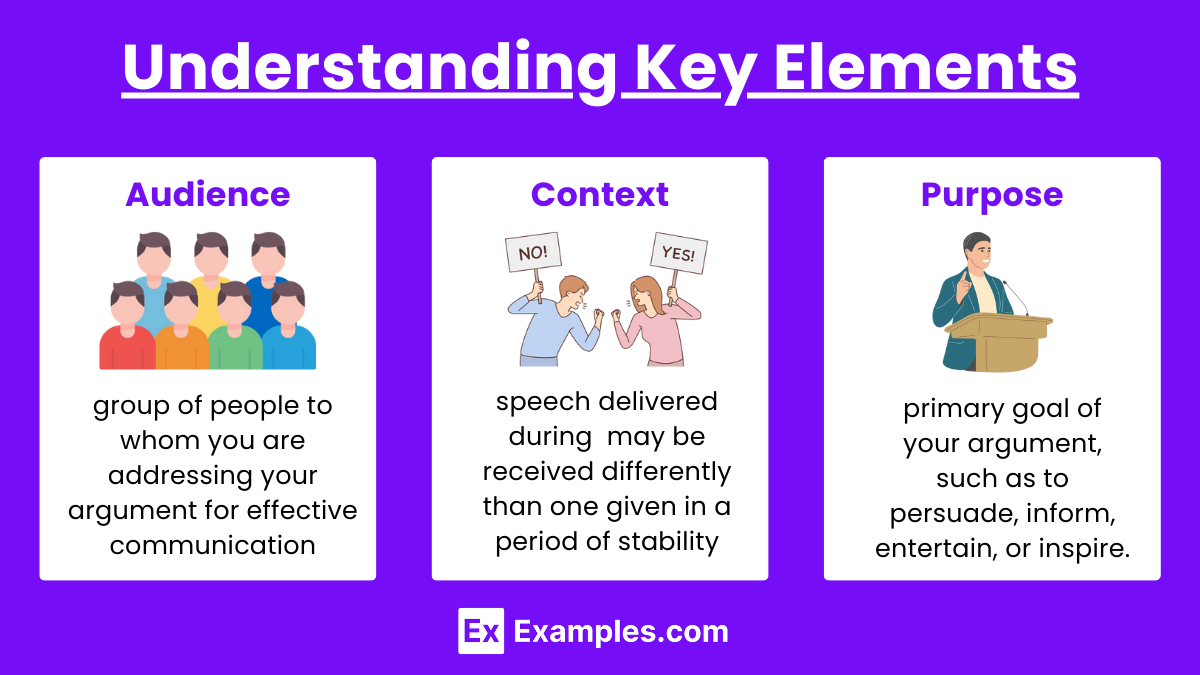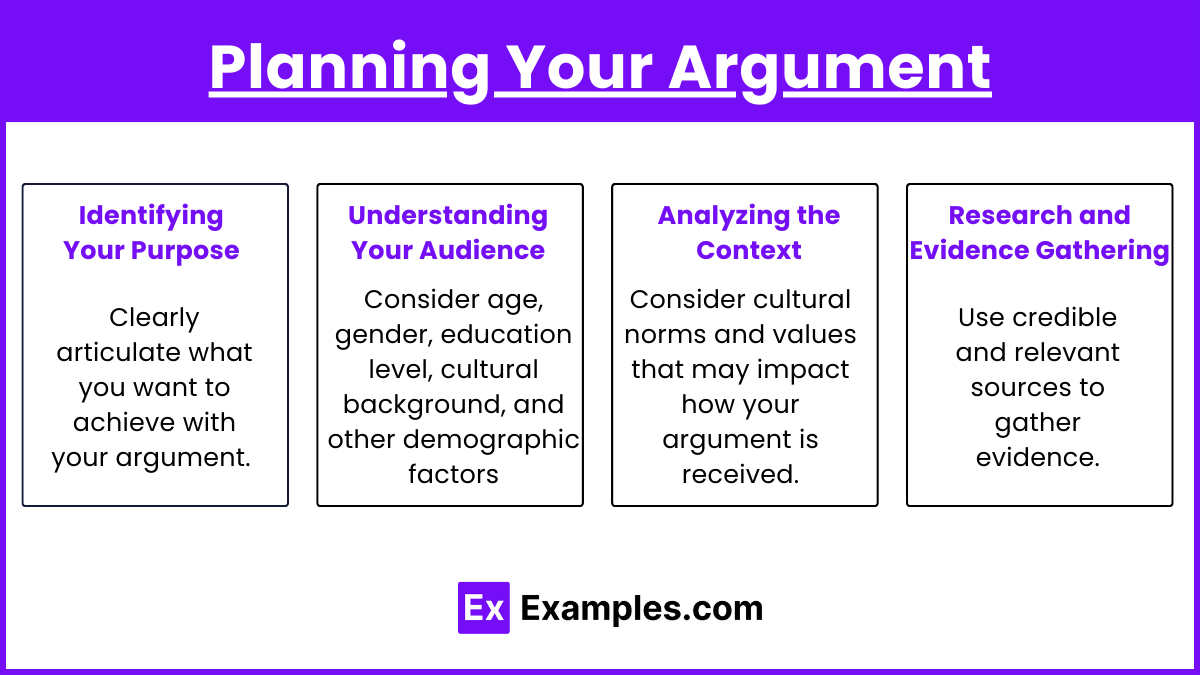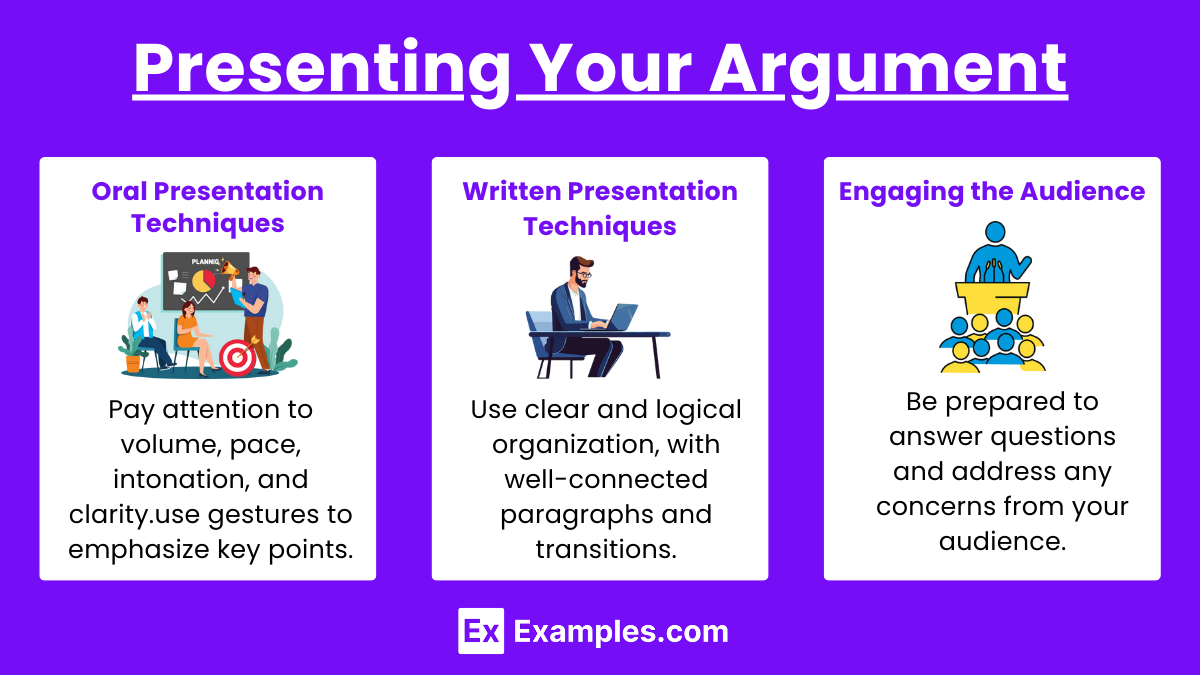Planning, producing, and presenting an argument while considering the audience, context, and purpose involves creating a compelling and persuasive narrative tailored to the specific needs and expectations of your audience. This process includes understanding the demographics and values of your audience, analyzing the situational and cultural context of the argument, and clearly defining the purpose, whether to persuade, inform, or entertain. By thoughtfully integrating these elements, you can craft an argument that is both impactful and effective, ensuring clear communication and engagement.
Learning Objectives
For the AP Seminar exam, you should learn how to effectively plan, produce, and present an argument by understanding and considering your audience, context, and purpose. This includes identifying your audience’s values and knowledge, analyzing the context for cultural and situational factors, and clearly defining your argument’s purpose. You should also focus on gathering credible evidence, structuring your argument logically, and presenting it persuasively both orally and in writing. Mastery of these skills will help you create compelling, well-supported arguments.
Understanding Key Elements

- Audience: The group of people to whom you are addressing your argument. Understanding your audience’s values, beliefs, and knowledge level is essential for effective communication.Consider their demographics, such as age, education, cultural background, and professional experience.
- Context: The circumstances surrounding your argument, including cultural, social, historical, and situational factors. Context shapes how your argument is perceived and understood.For instance, a speech delivered during a political crisis may be received differently than one given in a period of stability.
- Purpose: The primary goal of your argument, such as to persuade, inform, entertain, or inspire. Your purpose influences the tone, style, and structure of your presentation. For example, if your purpose is to persuade, you may use emotional appeals and strong evidence to convince your audience.
Planning Your Argument

1. Identifying Your Purpose
- Define Your Goal: Clearly articulate what you want to achieve with your argument. Are you aiming to persuade, inform, or entertain?
- Consider the Outcome: Think about the desired response from your audience and how you can guide them toward that response.
2. Understanding Your Audience
- Demographics: Consider age, gender, education level, cultural background, and other demographic factors.
- Prior Knowledge: Assess what your audience already knows about the topic.
- Values and Beliefs: Understand the core values and beliefs that may influence your audience’s reception of your argument.
- Potential Biases: Be aware of any biases your audience may have, and plan how to address or counter them.
3. Analyzing the Context
- Cultural Context: Consider cultural norms and values that may impact how your argument is received.
- Historical Context: Acknowledge historical events or trends that are relevant to your topic.
- Situational Context: Be mindful of the specific circumstances under which your argument is being presented (e.g., a public debate, classroom presentation, written report).
4. Research and Evidence Gathering
- Source Selection: Use credible and relevant sources to gather evidence. Ensure a balanced perspective by including multiple viewpoints.
- Types of Evidence: Incorporate statistical data, expert testimony, case studies, and real-world examples to support your argument.
- Ethical Considerations: Ensure the accuracy and honesty of your evidence, and give proper credit to sources.
Producing Your Argument

1. Developing a Thesis Statement
- Clear and Concise: Make your thesis statement clear, specific, and direct.
- Position Statement: Clearly articulate your stance or main argument.
- Preview of Main Points: Provide a brief overview of the key points that will support your argument.
2. Structuring Your Argument
- Introduction: Hook the audience, introduce the topic, and present your thesis.
- Body: Develop your argument with well-organized paragraphs, each presenting a single idea supported by evidence.
- Topic Sentences: Start each paragraph with a clear topic sentence that introduces the main idea.
- Supporting Details: Use evidence to support your claims, and explain how this evidence relates to your thesis.
- Counterarguments: Acknowledge and refute counterarguments to strengthen your position.
- Conclusion: Summarize your main points, restate your thesis in a new way, and leave the audience with a strong closing thought or call to action.
3. Style and Tone
- Appropriate for Audience: Adjust your language, style, and tone to suit your audience’s expectations and preferences.
- Clarity and Precision: Use clear and precise language to ensure your argument is easy to follow and understand.
- Engaging and Persuasive: Use rhetorical devices, such as anecdotes, metaphors, and rhetorical questions, to engage and persuade your audience.
Presenting Your Argument

1. Oral Presentation Techniques
- Vocal Delivery: Pay attention to volume, pace, intonation, and clarity. Use pauses effectively for emphasis.
- Body Language: Maintain good posture, make eye contact, and use gestures to emphasize key points.
- Visual Aids: Use slides, charts, and other visual aids to enhance understanding and retention. Ensure they are clear, concise, and directly related to your argument.
2. Written Presentation Techniques
- Clarity and Cohesion: Use clear and logical organization, with well-connected paragraphs and transitions.
- Proper Formatting: Follow any specific formatting guidelines provided (e.g., APA, MLA).
- Editing and Proofreading: Carefully edit and proofread your work for grammatical errors, clarity, and consistency.
3. Engaging the Audience
- Addressing Questions and Concerns: Be prepared to answer questions and address any concerns from your audience.
- Building Rapport: Establish a connection with your audience by being approachable and respectful.
- Encouraging Participation: Involve your audience through questions, discussions, or interactive elements.


